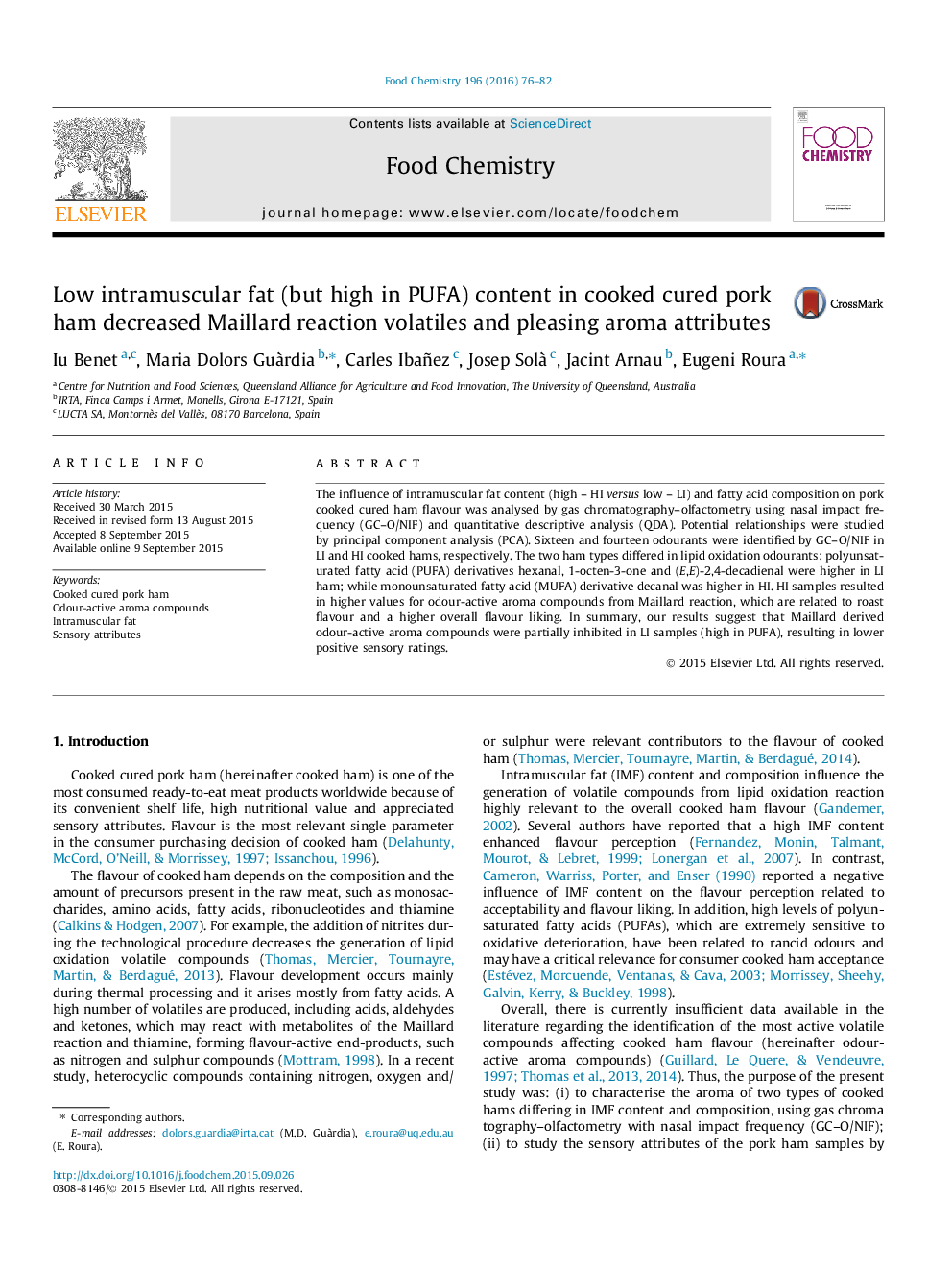| Article ID | Journal | Published Year | Pages | File Type |
|---|---|---|---|---|
| 1184131 | Food Chemistry | 2016 | 7 Pages |
•IMF composition determines the key aroma compounds from oxidation in cooked hams.•Maillard and amino acid pathways provide characteristic ‘meaty’ sulphur notes.•Low IMF was related to high flavour intensity in cooked ham.•Compared to low IMF, cooked hams with high IMF had higher flavour liking.
The influence of intramuscular fat content (high – HI versus low – LI) and fatty acid composition on pork cooked cured ham flavour was analysed by gas chromatography–olfactometry using nasal impact frequency (GC–O/NIF) and quantitative descriptive analysis (QDA). Potential relationships were studied by principal component analysis (PCA). Sixteen and fourteen odourants were identified by GC–O/NIF in LI and HI cooked hams, respectively. The two ham types differed in lipid oxidation odourants: polyunsaturated fatty acid (PUFA) derivatives hexanal, 1-octen-3-one and (E,E)-2,4-decadienal were higher in LI ham; while monounsaturated fatty acid (MUFA) derivative decanal was higher in HI. HI samples resulted in higher values for odour-active aroma compounds from Maillard reaction, which are related to roast flavour and a higher overall flavour liking. In summary, our results suggest that Maillard derived odour-active aroma compounds were partially inhibited in LI samples (high in PUFA), resulting in lower positive sensory ratings.
